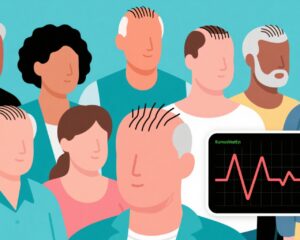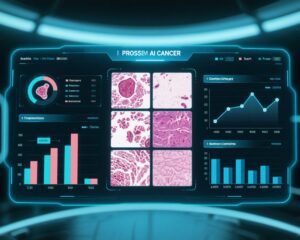The Mysterious Moment When Aging Feels Real
Have you ever suddenly felt “old” out of nowhere? Maybe it’s the stubborn wrinkle at the corner of your eye, the shortness of breath climbing a few flights of stairs, or that momentary lapse of memory when you walk into the kitchen and can’t recall why. Aging doesn’t announce itself gradually in our perception—it often strikes like an unseen turning point, a hidden fork in the road of life where our body’s trajectory quietly shifts.
This experience, sometimes described as “cliff-like aging,” is not just psychological but deeply rooted in the biological “time codes” inscribed in our organs and molecules. Recent research published in prestigious journals such as Cell and Nature Aging sheds new light on this non-linear process, identifying key ages when aging accelerates and critical systems begin to falter.
Understanding Aging at the Molecular Level: Protein Homeostasis and Its Decline
Proteins are the workhorses within cells, facilitating almost every function required for life. From synthesis to folding, modification, transport, and degradation, cells rely on a precise equilibrium known as “protein homeostasis” or “proteostasis”. With age, this balance wobbles. Proteins start misfolding, aggregating abnormally, and losing function, undermining cellular and tissue health.
A landmark study published in Cell (Ding et al., 2025) documented how the harmony between mRNAs and their encoded proteins deteriorates over decades, particularly in key tissues such as the spleen, skeletal muscle, and lymph nodes. This discordance, along with the accumulation of misfolded amyloid proteins, activates the immune system chronically. The complement system—a part of innate immunity—remains heightened, fostering a slow, simmering inflammatory state often described as “inflammaging,” which gradually exhausts organ function.
Key Findings: The Aging Timeline from 30 to 60+ Years
The comprehensive proteomic analysis reveals distinct phases:
– Around 30 years: The earliest detectable signs of aging surface. While most organs show few changes, endocrine regulation begins to falter, especially in the adrenal glands. The aorta—a major blood vessel—shows early deviations, marking the onset of vascular aging.
– 45–55 years: This period marks a “molecular cascade storm.” Protein profiles in many organs reshuffle rapidly. The aorta shows the most pronounced and sustained changes, reflecting its sensitivity to aging. The pancreas and spleen also reorganize their protein landscapes, signaling declines in metabolic and immune function.
– Around 60 years: A crucial tipping point identified through multi-omics studies (Shen et al., 2024, Nature Aging). Here, gene expression pathways related to oxidative stress spike, while mechanisms that maintain mRNA stability and autophagy—the process that clears damaged cellular components—fluctuate significantly. Clinically, markers like blood urea nitrogen and blood glucose levels indicate a nonlinear worsening of kidney function and increased diabetes risk.
The Role of Circulating Aging Proteins: GAS6 and Its Peers
Intriguingly, researchers discovered that certain secreted proteins accumulate with aging and actively induce senescence—cellular aging—in vascular cells. The protein GAS6, rich in aged aortic tissue and circulation, can trigger aging traits in human endothelial and smooth muscle cells. Animal experiments show GAS6 accelerates declines in mobility and promotes multi-organ aging.
Other aging-related secreted factors include GPNMB, COMP, HTRA1, and IGFBP7. These proteins directly contribute to blood vessel aging, indicating vascular aging is not merely local tissue deterioration but also driven by systemic circulating factors.
Aging Is Non-Linear: The Biological Domino Effect
A striking insight from Nature Aging (Shen et al., 2024) is that human aging does not progress at a uniform pace. Instead, there are critical inflection points — notably at ages 44 and 60 — after which physiological deterioration and related disease risk ramp up drastically. These findings echo the “cliff-like” sensation many experience, where aging suddenly feels accelerated.
This non-linear pattern also aligns with clinical observations: renal function and glucose metabolism markers show stepwise declines rather than smooth trajectories. This better explains the sudden onset or worsening of age-related diseases like cardiovascular disease, diabetes, and frailty.
Implications for Health and Longevity
Understanding the timing and mechanisms of these biological aging cliffs could revolutionize interventions. For example, the early endocrine changes at 30 highlight the potential value of monitoring and supporting hormonal health before overt disease appears.
The identification of circulating aging proteins provides promising targets for therapies aimed at slowing or reversing vascular aging, potentially reducing systemic decline. Importantly, this research underscores that aging is a dynamic and complex process with windows of vulnerability — a call to detect early warning signs and intervene proactively.
Patient Scenario: Mark’s Suddenly Accelerated Aging
Mark, a 52-year-old office worker, recently noticed fatigue climbing stairs and occasional forgetfulness. He dismisses these as stress but feels troubled by the rapid appearance of gray hair and a persistent cough. After consulting his doctor, biomarker testing reveals elevated inflammatory markers and early signs of vascular aging.
Mark’s case illustrates a common midlife “aging cliff.” His doctor emphasizes lifestyle modifications, cardiovascular risk monitoring, and a possible trial of emerging therapies targeting proteins like GAS6. Mark’s awareness of this non-linear aging process helps him take timely action to potentially delay downstream complications.
Conclusions
Aging is not a gradual, steady decline but a series of molecular and physiological shifts occurring at critical ages such as 30, 45–55, and 60 years. These changes herald a transition to accelerated senescence and increased disease vulnerability.
Recent proteomic and multi-omics studies highlight the pivotal role of endocrine disruption, protein homeostasis imbalance, and circulating aging factors in this process. This growing understanding opens new avenues for early detection and therapeutic intervention to improve healthspan.
Awareness of the “cliff-like” nature of aging encourages proactive health management and challenges us to redefine aging as a dynamic trajectory with identifiable tipping points rather than an inevitable slide.
References
[1] Ding, Y., Zuo, Y., Zhang, B., Fan, Y., Xu, G., Cheng, Z., Ma, S., Fang, S., Tian, A., Gao, D., Xu, X., Wang, Q., Jing, Y., Jiang, M., Xiong, M., Li, J., Han, Z., Sun, S., Wang, S., Qu, J., Zhang, W., & Liu, G.-H. (2025). Comprehensive human proteome profiles across a 50-year lifespan reveal aging trajectories and signatures. Cell, 188(1–22). https://doi.org/10.1016/j.cell.2025.06.047 IF: 42.5 Q1
[2] Shen, X., Wang, C., Zhou, X. et al. Nonlinear dynamics of multi-omics profiles during human aging. Nat Aging 4, 1619–1634 (2024). https://doi.org/10.1038/s43587-024-00692-2 IF: 19.4 Q1



